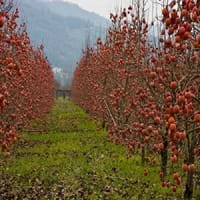Life Span
Perennial
Perennial
Type
Bulb or Corm or Tuber
Tree
Origin
South America, Argentina
China
Types
Not Available
Not available
Habitat
Temperate Regions
secondary forest, Sunny Edge, Woodland Garden Canopy
USDA Hardiness Zone
5-9
6-10
Sunset Zone
21,22
H1, 6, 7, 8, 9, 12, 14, 15, 16, 18, 19, 20, 21, 22, 23, 24
Habit
Clump-Forming
Pyramidal
Flower Color
Light Blue, Light Purple, Silver, Sky Blue
Light Yellow
Flower Color Modifier
Bicolor
Bicolor
Fruit Color
Not Available
Orange
Leaf Color in Spring
Green, Light Green, Gray Green
Green
Leaf Color in Summer
Light Green
Green
Leaf Color in Fall
Several shades of Green
Yellow, Burgundy, Orange Red
Leaf Color in Winter
Light Green
Not Available
Leaf Shape
Grass like
Pinnate
Plant Season
Spring
Summer, Fall, Winter
Sunlight
Full Sun, Partial Sun, Partial shade
Full Sun, Partial Sun
Growth Rate
Medium
Medium
Type of Soil
Clay, Loam, Sand
Clay, Loam
The pH of Soil
Acidic, Neutral, Alkaline
Acidic, Neutral
Soil Drainage
Well drained
Well drained
Bloom Time
Early Spring, Spring, Late Winter
Summer
Tolerances
Drought
Not Available
Where to Plant?
Container, Ground
Ground
How to Plant?
By dividing rhizomes, tubers
Grafting, root cutting, Seedlings
Plant Maintenance
Medium
Medium
Watering Requirements
Average Water Needs, Do Not over Water, Requires regular watering
Requires regular watering
In Summer
Lots of watering
Lots of watering
In Spring
Moderate
Moderate
In Winter
Average Water
Average Water
Soil pH
Acidic, Neutral, Alkaline
Acidic, Neutral
Soil Type
Clay, Loam, Sand
Clay, Loam
Soil Drainage Capacity
Well drained
Well drained
Sun Exposure
Full Sun, Partial Sun, Partial shade
Full Sun, Partial Sun
Pruning
Remove damaged leaves, Remove dead branches, Remove dead leaves
Remove damaged leaves, Remove dead branches, Remove dead leaves
Fertilizers
All-Purpose Liquid Fertilizer
All-Purpose Liquid Fertilizer
Pests and Diseases
Slugs, Snails
Caterpillars
Plant Tolerance
Drought
Drought
Flowers
Showy
Insignificant
Flower Petal Number
Single
Single
Foliage Texture
Medium
Medium
Foliage Sheen
Matte
Glossy
Self-Sowing
Yes
Not Available
Attracts
Bees, Birds, Hummingbirds
Birds
Allergy
Not Available
Abdominal pain, Anaphylaxis, Inflammation
Aesthetic Uses
Showy Purposes
Not Used For Aesthetic Purpose
Beauty Benefits
Not Available
Not Available
Environmental Uses
Air purification
Air purification
Medicinal Uses
No Medicinal Use
Astringent, Cancer, Diarrhea
Part of Plant Used
Flowers
Bark, Fruits, Wood
Other Uses
Not Available
Used as a cereal in making bread, porridge, Used As Food, Used for flavoring in Liquors, dairy products, gelatins,puddings, meats, candies, etc.
Used As Indoor Plant
Yes
No
Used As Outdoor Plant
Yes
Yes
Garden Design
Container, Lawns and Turf, Mixed Border, Rock Garden / Wall, Wildflower
Feature Plant, Fruit / Fruit Tree, Topiary / Bonsai / Espalier
Botanical Name
Ipheion uniflorum
Diospyros virginiana
Common Name
Spring Starflower, Springstar
American persimmon common persimmon, sugar-plum,eastern persimmon
In Hindi
Spring Starflower
अमेरिकी ख़ुरमा
In German
Frühling Borretsch
amerikanische persimmon
In French
Spring Starflower
Diospyros virginiana
In Spanish
primavera Flor de estrella
Diospyros virginiana
In Greek
άνοιξη starflower
American λωτός
In Portuguese
primavera Starflower
Caqui americano
In Polish
Wiosna Starflower
Amerykański persimmon
In Latin
Spring Starflower
Diospyros virginiana
Phylum
Magnoliophyta
Tracheophyta
Class
Lilopsida
Magnoliopsida
Order
Asparagales
Ericales
Family
Liliaceae
Ebenaceae
Clade
Angiosperms, Monocots
Angiosperms, Asterids, Eudicots
Tribe
Gilliesieae
Not Available
Subfamily
Allioideae
Not Available
Number of Species
Not Available
Not Available
Season and Care of Spring Starflower and American persimmon
Season and care of Spring Starflower and American persimmon is important to know. While considering everything about Spring Starflower and American persimmon Care, growing season is an essential factor. Spring Starflower season is Spring and American persimmon season is Spring. The type of soil for Spring Starflower is Clay, Loam, Sand and for American persimmon is Clay, Loam while the PH of soil for Spring Starflower is Acidic, Neutral, Alkaline and for American persimmon is Acidic, Neutral.
Spring Starflower and American persimmon Physical Information
Spring Starflower and American persimmon physical information is very important for comparison. Spring Starflower height is 10.20 cm and width 5.10 cm whereas American persimmon height is 760.00 cm and width 610.00 cm. The color specification of Spring Starflower and American persimmon are as follows:
Spring Starflower flower color: Light Blue, Light Purple, Silver and Sky Blue
Spring Starflower leaf color: Green, Light Green and Gray Green
American persimmon flower color: Light Yellow
- American persimmon leaf color: Green
Care of Spring Starflower and American persimmon
Care of Spring Starflower and American persimmon include pruning, fertilizers, watering etc. Spring Starflower pruning is done Remove damaged leaves, Remove dead branches and Remove dead leaves and American persimmon pruning is done Remove damaged leaves, Remove dead branches and Remove dead leaves. In summer Spring Starflower needs Lots of watering and in winter, it needs Average Water. Whereas, in summer American persimmon needs Lots of watering and in winter, it needs Average Water.





